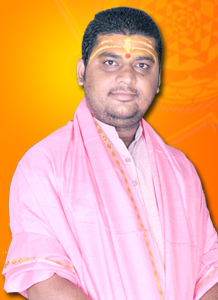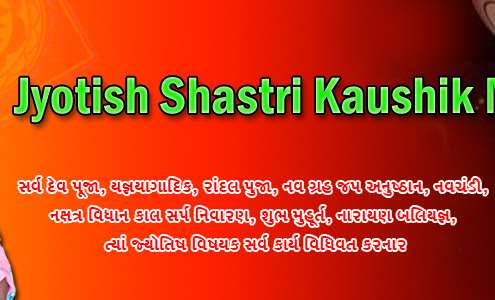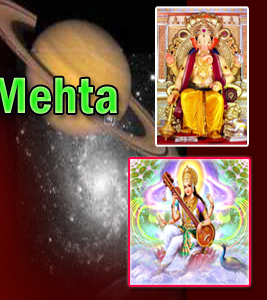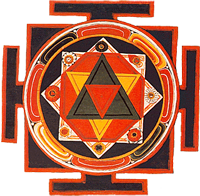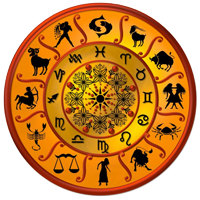Just as many ancient civilizations had their own versions of
astronomy, Hindus had
their own version of astronomy from very ancient times.
Hindu astronomy is based upon the configuration of the nine
planets and their collective influence on the world in general
and each individual in particular. Depending upon where these planets
are located at the time of a person's birth, Hindus believe that
the possibilities and potentialities of his life and energies are
determined well in advance.
Who are Navagrahas?
The nine planets are collectively known as Navagrahas. They are
worshipped in Hinduism for good luck or to overcome adversity, bad
luck or misfortune arising from past karmas or birth related defects
(dhoshas. They are found in most Hindu temples either grouped together
on a panel or on a pedestal in commonly visible areas of the temple.
Devotees usually propitiate these gods before offering prayers to
the main deity in the sanctum sanctorum of the temple. Of the nine
deities, seven are named after the planets in the solar system,
and correspond with the names of the seven days in the week
of the Hindu calendar.
Rahu and Ketu
The remaining two deities are actually demons who managed to
gain a place in the pantheon through an act of trickery. Their names
are derived from either comets or from the dark and somewhat hostile
planets of the solar system (Neptune and Pluto). Depending upon
their location in the planetary system and their association with
the remaining deities, they are deemed either auspicious or inauspicious.
Significance in astrology
The nine planetary gods have a great significance in Vedic astrology.
Hindu astrologers draw the birth charts of individuals based upon
the their position at the time of their birth. Depending upon where
they are located in the astrological chart at a given time, they
exert positive or negative influence upon people and their destinies.
The position of Sani, Rahu and Ketu are especially considered important.
If their positions are not favorable, astrologers suggest remedial
measures to pacify the planets and ward off their negative influence.
Navagraha temples
While Navagrahas are usually found in many temples as subordinate
deities, there are some temple which are exclusively built for them
where they are worshipped as the main deities. One such temple is
the Navagraha temple located on the banks of the river Kshipra in
the outskirts of Ujjain, a famous pilgrim center of Saivism
in central India. Some times we also come across temples built exclusively
for only one of the Navagrahas such as the temples built for Surya
and Sani in many parts of India. For example, there is a famous
temple of Sani near Hindupur, which is frequented by many devotees.
Description of Navagrahas
A brief description of each of the Navagrahas is given below:
1. Surya (Sun): He is the Sun god, also called Ravi. In
the company of the other planets, he generally stands in the center
facing east, while the other planets stand around him in eight different
directions, but none facing each other. He rides a chariot that
has one wheel and pulled by seven while horses. The seven horses
symbolically represent the seven colors of the white light and the
seven days of the week.
2. Chandra (Moon): Also knows as Soma, and probably because
of his waxing and waning qualities, in the images he is never depicted
in full. We see him with only his upper body from chest upwards,
with two hands holding one lotus each, riding upon a chariot drawn
by 10 horses.
3. Mangala (Mars): Also called Angaraka, Mangala
is a ferocious god with four hands. In two hands he holds weapons,
generally a mace and a javelin, while the other two are held in
abhaya and varada mudras. He uses ram as his vehicle.
4. Budha (Mercury): We generally see him depicted with
four hands, riding upon a chariot or a lion. Three of his hands
hold a sword, a shied and a mace respectively, while the fourth
one is held in the usual varada mudra (giving gesture).
5. Brihaspathi (Jupiter): Brihaspati also known as Brahmanaspati
is the teacher of gods and is praised in many hymns of the Rigveda.
He is generally shown with two hands, seated in a chariot driven
by eight horses. The eight horses probably represent eight branches
of knowledge.
Sukra (Venus): Sukra is the teacher of the demons and
the author of Sukraniti. He is generally shown with four hands,
riding upon a golden or a silver chariot drawn by eight horses.
Three of his hands hold a staff, a rosary, a vessel of gold respectively
while the fourth one is held in varada mudra .
Sani (Saturn): Sani is a turbulent and troublesome god
who makes and breaks fortunes by his influence and position in the
planetary system for which he is invariably feared and especially
worshipped by those who believe in Hindu astrology. He is generally
shown with four hands riding upon a chariot, or a buffalo or a vulture.
In three hands he shown holding an arrow, a bow and a javelin respectively
while the fourth one is held in varadamudra.
Rahu: His image resembles that of Budha (Mercury) in some
respects but both gods differ fundamentally in their nature and
temperament. He is generally shown riding a dark lion, in contrast
to the white lion of Budha. But just like the other god, he carries
the same weapons, namely a sword, a javelin and a shield in his
three hands, while his fourth hand is held in varadamudra.
Ketu: In Sanskrit Ketu (Dhuma ketu) means comet. The scriptures
describe him as having the tail of a serpent as his body, a description
which very much matches with his connection to the image of a comet.
However in the images, he is usually shown with a poke marked body,
riding upon a vulture and holding a mace.
Symbolism
Of the nine planets, only seven are actually gods and the other
two, Rahu and Ketu are demons. The seven are usually spoken as planets,
while the two are compared to comets and the like, having a shadowy
influence upon the destinies of people. The names for the seven
days in the week are derived from the planetary gods. As can be
seen from their names, some of the deities included in the Navagrahas
are actually Vedic gods. Most likely, the concept of Navagrahas
is later Vedic concept. There is no mention of the Navagrahas in
the early Upanishads. The Brihadaranyaka Upanishad (3.2) speaks
of eight grahas and eight atigrahas in the body in the sense of
grasping deities (sense-organas) and overseeing grasping deities
(sense-objects). The eight grahas mentioned in the Upanishad are
incoming breath (prana), speech, tongue, eye, ear, mind, hands,
skin. Their overseeing grasping deities are apana (downward breath),
name, taste, color, ear, desire, touch. We do not know whether this
concept of grahas in the body underwent a transformation subsequently.
The Navagrahas are not the actual planets in the modern sense, although
they are called planets. They are deities in the Cosmic Person with
corresponding presence in the microcosm. Their positions in the
body as well in the world influence the course of events both at
the universal and individual planes.
Characteristic features
Following is the specific information with regard to the nine
planetary gods, is adapted from Wikipedia.
| Character |
Surya (sun) |
Chandra (Moon) |
Mangala (Mars) |
Budha (Mercury) |
| Consort |
Sangya & Chaaya |
Rohini |
Shaktidevi |
Ila |
| Color |
Gold |
Silver |
Red |
Green |
| Gender |
Male |
Male |
Male |
Male |
| Element |
Fire |
Water |
Fire |
Earth |
| God |
Agni |
Varuna |
Subramanya |
Vishnu |
| Overseeing Deity |
Rudra |
Gowri |
Kumara |
Vishnu |
| Metal |
Gold |
Silver |
Copper |
Zinc |
| Gemstone |
Ruby |
Pearl/Moonstone |
Red Coral |
Emerald |
| Body Part |
Bone |
Blood |
Marrow |
Skin |
| Taste |
Pungent |
Salt |
Acid |
Mixed |
| Food |
Wheat |
Rice |
Pigeon pea |
Mung bean |
| Season |
Summer |
Winter |
Summer |
Autumn |
| Direction |
East |
North West |
South |
North |
| Day |
Sunday |
Monday |
Tuesday |
Wednesday |
| Tone (Svara) |
Ga |
Ma |
Re |
Sa |
| |
| Character |
Guru (Jupiter) |
Shukra (Venus) |
Shani (Saturn) |
Rahu (north node) |
Ketu (south node) |
| Consort |
Tara |
Sukirthi & Urjaswathi |
Neeladevi |
Simhi |
Chitralekha |
| Color |
Yellow |
White/Yellow |
Black/Blue |
Dark Blue |
Smoky Grey |
| Gender Associated |
Male |
Female |
Neutral |
Male |
Neutral |
| Element |
Ether |
Water |
Air |
Air |
Earth |
| God |
Indra |
Indrani |
Brahma |
Nirriti |
Ganesha |
| Overseeing Deity |
Brahma |
Indra |
Yama |
Durga |
Chitragupta |
| Metal |
Gold |
Silver |
Iron |
Lead |
Mercury |
| Gemstone |
Yellow Sapphire |
Diamond |
Blue Sapphire |
Hessonite |
Cat's Eye |
| Body Part |
Brain |
Semen |
Muscles |
Head |
Skin |
| Taste |
Sweet |
Sour |
Astringent |
- |
- |
| Food |
Chickpea |
kidney beans |
Sesame |
Urad (bean) |
Horse gram |
| Season |
Winter |
Spring |
All Seasons |
- |
- |
| Direction |
North East |
South East |
West |
South West |
- |
| Day |
Thursday |
Friday |
Saturday |
Saturday |
-Tuesday |
| Tone (Svara) |
Dha |
Ni |
Pa |
- |
- |
|
